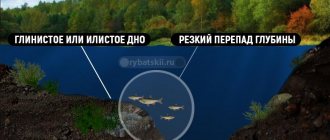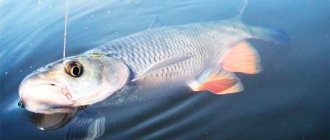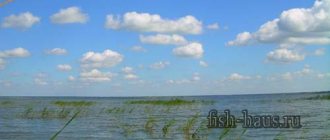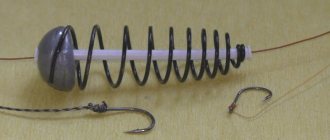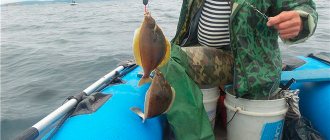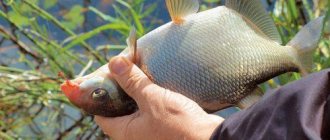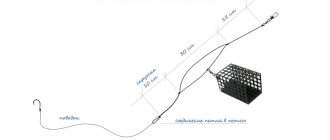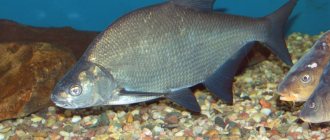In terms of its popularity and prevalence, roach fishing confidently ranks second after crucian carp hunting among fishermen in our country. Fishing for roach can be characterized as a technically simple and inexpensive type of fishing that does not require large investments in equipment and does not take a lot of time to acquire initial fishing skills. In addition, the prevalence of fish makes it possible to massively cultivate this trend among those beginning the hobby of fishing.
The omnivorous nature of this fish gives the right to use versatile and easy-to-catch baits. The names of fish in different parts of our country are also interesting. For example, if in the central and western parts we know fish under the definition of roach, then in the southern regions ram and roach are common terms for this carp species. In the northern regions, roach is often called chebak. Despite the name, the fish everywhere leads an absolutely similar way of life, without changing its habits, which for the fisherman is a signal of the same approaches to fishing methods, selection of gear and elaboration of strategies.
In the course of the article, we will analyze the main secrets of catching rams, discuss its technical aspects and highlight the most delicious baits for baits.
Where to catch roach
Catching large roach is possible only in large bodies of water with a moderate current, where there is a lot of aquatic vegetation and there are bottom areas with silt deposits that facilitate the habitation and reproduction of small crustaceans and insect larvae. In small rivers and stagnant ponds, the fish are ubiquitous, but do not differ in size and, for the most part, do not grow above 150 grams.

The roach is a schooling fish and prefers to stay in groups with individuals proportional to each other. Schools are shy and cautious, since this type of fish is the main food source for any predator living in a reservoir. The fish like to settle down in quiet backwaters, standing at the borders where the backwater meets the current. In these places they guard any object similar to something suitable for feeding that floats in the current of thrust. Overhanging crowns of trees over water areas with depths of up to three meters, walls of reeds or cattails near the banks, adjacent to the smooth flows of the river, those places where roaches will spin in search of food.
Important! It is better to catch roach at small distances from the bottom, up to 20 cm, throwing bait along the flow, carrying out the so-called fishing for roach in the wire.
The better to feed
The secrets of catching roach directly depend on the method of attaching the fish and, in particular, the proper preparation and presentation of bait. The bait is prepared to a consistency that allows the creation of a stable column of turbidity, after which the nutrient particles will spread downstream in a trail. You can create such mixtures using small fish feed mixed with aromatic breadcrumbs.
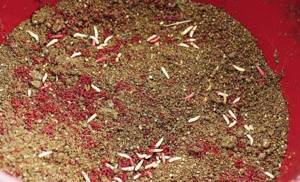
An animal component in the form of bloodworms or hemp, colored small maggots, as well as various attractants are added to this base. Attractants are often culinary seasonings such as vanilla and cinnamon. These are effective scents that allow you to catch large roach on the river at any time of the year, including winter. The bait is fed into the fishing zone in balls, which should break on the surface of the water, creating the background required for bait in its thickness.
What do roaches bite on?
The diet of the roach includes both animal and plant foods. It is difficult to note any particular periodicity in the preferences of roach over the seasons; fish are caught with a variety of baits throughout all periods, excluding only the spawning period, when they do not feed at all. A universal bait is bloodworms. This bait can be used under any conditions, the roach will definitely bite. Other gains can only make it even more intense.
The best baits of animal origin
Besides bloodworms, the second most popular bait used to feed roach is maggot. Various bait colors will suit the unstable mood of the fish. Catching large roach is possible by using a sandwich of bloodworms and maggots, simultaneously strung with alternating baits on the hook. Caddis flies, pieces of dung and leaf worms, and small leech are no exception in the fish’s diet. Insects include flies, grasshoppers, small butterflies and dragonflies. Among inert animals, crayfish meat, dried pieces of toothless shells, and thinly sliced fillet strips of sea and river fish are successfully used. It is worth focusing on the use of artificial simulators of animal baits in their silicone design, which give good results in catching roach in currents.
The best vegetable baits
Roaches are well caught on plant baits due to their olfactory attractiveness. The bait should definitely have its own smell. The prepared porridges are charged with active attractants so that the grain strung on the hook has a lasting aroma. Pearl barley is the most popular grain for profit. Steamed cereal grains and small peas are used with the least success, but are applicable according to the season of their natural ripening.
Important! Catching large roach is famous for using sweet canned corn.
In special cases of the presence of trophy specimens in the fished reservoir, garlands from this bait are used. Dough, mastyrka and hominy are used in stagnant and weakly flowing reservoirs. Baiting roach in the form of a bunch of young algae is justified at the moment of their rapid growth. Green algae, young hornwort and elodea shoots enter the roach's food cycle at the very beginning of summer. Roaches do not shy away from testing small-caliber boilies. Sizes up to half a centimeter are quite suitable for use throughout the year. As with animal mimics, plant counterparts have also been used with comparable success. Artificial corn kernels, and even ordinary foam balls, easily become prey for actively feeding fish.
Fishing for ram in summer
In summer, the highest concentration of rams is observed in places where rivers flow into the seas, in bays near the seas, as well as in reservoirs with clean water. In summer, the heat increases, so the ram moves to cooler places, with a sandy and shell bottom. You should catch ram in the morning before the heat sets in.
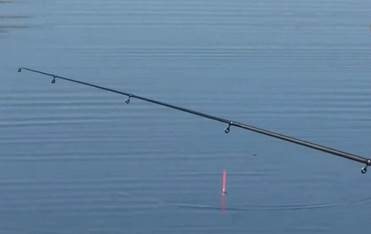
It is best to catch rams using a Bolognese rod with a firmly attached float. A good bait for this fish is millet with commercial bait or breadcrumbs. Sugar and vanilla are added to millet. A good option is to take a handful of expensive VDE type groundbait and add it to the groundbait. The amount of feed should be large - up to 6 kg. If we are catching rams all day long, then the tactics are as follows: we throw the bait downstream, and a little to the left, balls of bait the size of a small apple. The current will bring some bait to the bait and collect the ram.
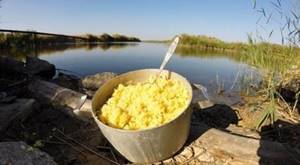
We throw food every 10-15 minutes. It has been noticed that larger individuals immediately approach and sit on the hook more boldly after the next ball thrown into the water. We set the hook number 14-16, the fishing line should have a diameter of 18 mm. In summer, it is better to use vegetable baits for ramming: pearl barley, dough and bread.
What do rams bite on in June, July and August?
In some reservoirs, ram is excellent for catching at night from a boat, especially in mid-summer. All you have to do is find a hole and feed the place. This time the water and air temperatures are very comfortable for catching rams. They catch it on board and regular fishing rods with vegetable baits.
When fishing on a feeder, it is better to use long leashes up to 1 meter, equipped with an asymmetrical loop, or paternoster. We place a maggot and a foam ball on hook No. 12. In the morning it is better to fish with a worm and maggot, and closer to lunch they fish with pearl barley, soft bread and dough. A few words about bread. It should be very soft so that the hook can pierce it easily. Such tender bread is liked not only by rams, but also by crucian carp and bream. This is about the same as a person who loves fresh white bread with a crispy crust.
By the way, about the crusts. Very catchy baits are made from a crust of bread, lightly fried in sunflower oil. The recipe for making crusts is simple. We take a crust of bread and cut it into small pieces, which are placed in a frying pan. They fried it and put it in a box. Such baits hold well on the hook when fishing with a donk and a feeder.
Go to the summer fishing
to get acquainted with fishing for other types of fish during this period.
How to catch roach
The most accessible method of fishing is with float rods. Depending on the habitat distance of the object of hunting, an angler can use a fly, Bolognese or match rod with equal success. Float fishing is also applicable in winter, using miniature equipment for ice fishing. The use of a feeder rod and classic bottom rigs allows you to fish in places remote from the shore, counting on catching trophy specimens. In winter, jigs are used to a greater extent, using a certain technique for playing the supplied bait. During the pre-spawning and post-spawning periods, classic spinning fishing is justified, using crank-type wobblers in miniature forms with an active flickering and not sweeping game. Catching roach in the summer with spinning rods is done using micro-spinners.
Fishing on a feeder
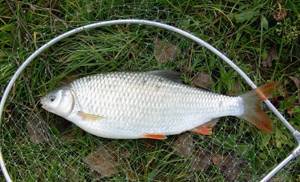
Feeder fishing is used on lakes and large rivers at depths of 2–3 meters. As a tackle, a pickerel with small tests, no longer than three meters, is used. Quivertypes are the most subtle and responsive to bites, since the bite signals themselves are quite weak and not clear. Tackle for catching roach is equipped with sensitive rigs, such as an asymmetrical loop, with light feeders and a small cell, which is loaded with dry bait with the smallest fraction. Braided line is used as the main line for fishing distances over twenty meters. The addition of larvae in the form of bloodworms and maggots increases the chances of a quick approach and retention of a school of fish at the feeding site. Leashes are charged short, starting from ten centimeters. If there are no bites in the first five to seven minutes, it is recommended to increase the leashes by 8-10 centimeters until a stable bite is established. As a rule, leashes over forty centimeters cease to be effective and then they begin to change baits and complementary foods, or even the entire fishing area. The bait spot is formed with large feeding troughs in a volume of five casts.
Fishing with a float rod
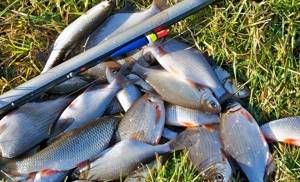
Catching roach in the spring during the pre-spawning period is most effective with float gear. Bites are frequent and confident, and roach gear in the form of a fly rod or Bolognese fishing rod significantly increases the fishing speed, which proportionally affects the number of fish caught. Floats for installations are used with a small boss and a medium-sized antenna, no more than 6–10 cm, with a total weight of 0.5–3 grams. The shipment is formed using pellets of various masses. The best options for loads are in the form of a garland of different shot diameters, and, accordingly, masses. The fishing rod is equipped with monofilament no more than 0.16 mm in diameter. Leads of 15–20 cm, with a diameter of 0.1–0.12 mm are supplemented with sub-leads of a tenth of a gram. A small hook, numbers 16–18 in the color of the thin wire bait used, completes the logic of installation.
The fishing technique involves moving the equipment along the trajectory of a promising path, ten centimeters from the bottom. When completing the retrieve, hold the rig, allowing the force of the current to lift the bait. It is during ascents that the bulk of bites occur, which are expressed in a sharp sinking of the float, followed by hooking and removing the fish to the shore using a rod. In reservoirs without a current, the equipment is thrown into the feeding point and they wait for the signaling device to move to the side or into the depth.
Catch with an elastic band
This method is effective for fishing on lakes with constant depths. An elastic bottom made from monofilament is equipped with five or ten leashes, no longer than 15 cm, every three meters, adding small floats, a couple of grams, made of foam bosses for the buoyancy of the bait. The initial complementary feeding of the fishing spot is not used. Medium-sized dung worms are used as bait, purely for the purpose of catching trophy fish. Bites are detected by the sound of a bell, even a slight tremor of which requires immediate hooking. Hatched fish rarely show fighting qualities and are fished without resistance or special tension.
Equipping a fly rod
We will need a parabolic type fly rod 6-7 meters long. We tie a piece of fishing line to it, which is 30 centimeters longer than the rod. We attach the fishing line to a plastic connector located on the tip of the rod.

We install a sports float with a blind mount, teardrop-shaped or needle-shaped. The carrying capacity of the float is 1-2 grams. In quiet places and when fishing on a boat between water lilies and in creeks, you can use lighter floats.
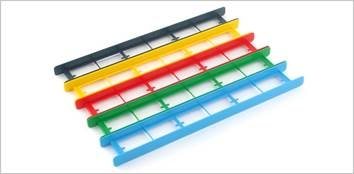
We surround the floats with 3-5 pellets. The remaining elements of the equipment are the same as in the Bolognese fishing rod.
It is convenient to hold rigs for match fishing rods on plastic reels of this type:
It is better to have up to 10 such equipment. On the reels we write the diameter of the fishing line and leader, the hook number and the carrying capacity of the float. Upon arrival at the reservoir, we select the equipment that is applicable for the given conditions.
Roach fishing in spring
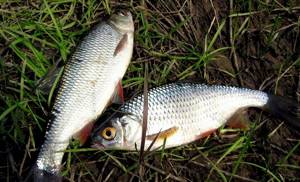
Spring time is considered the best ram hunting period of the year. The reservoirs are free of vegetation and fishing can be carried out using all methods convenient for the chosen location. In addition, pre-spawning and post-spawning food contributes to solid catches in a short period of time. More attractive baits of animal origin, bloodworms, maggots and worms. But the roach does not refuse boiled pearl barley, or even small sweet corn. Fishing places are chosen in shallow, well-warmed backwaters. In currents, fishing is done with holding, allowing the bait to rise to the very top layers of the water.
Fishing in summer
Rigging for roach in summer requires more delicacy. The fish becomes more careful and picky about baits, demanding silence from the fisherman, which significantly affects the interruptions in biting during periods of intensive feeding. On the lakes they begin fishing with a feeder at long distances. On rivers, bait is carried along the flow, using Bolognese fishing rods for convenience, along the walls of aquatic plants above the very bottom carpet of algae. The bait actively includes insects and aquatic vegetation, tracking the peak of its growth. Trophy fish are lured with canned corn and sandwiches made from selected maggots and large bloodworms. In the heat, the bite weakens significantly; with rain and slight cold snaps with insignificant wind force, the activity of the fish increases.
Fishing in autumn
The autumn season is famous for its unstable bite, which is highly dependent on changing weather conditions. Sunny warm days increase the intensity of bites. Fogs, cold mornings, prolonged rains and strong winds negatively affect the activity of bites. The fish migrate to deeper points in the reservoir and switch to feeding on bloodworms, reducing the plant component in their diets. Feeder fishing and classic bottom gear are beginning to dominate the choice of hunting strategies, bringing in larger specimens in catches and introducing stability of bites into fishing.
Seasonal fishing features
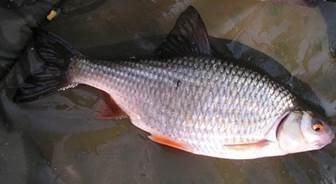
Ram fishing on donka begins to be actively caught when the water warms up to 10-12 degrees. If the roach takes it a little earlier, then the ram becomes active when the water becomes more pleasant and soft. This is the end of April and the beginning of May. You can catch it at this time from the shore, even without a feeder. In spring you can catch fish up to 500 grams.
When water overflows its banks and floods occur, so-called running fishing is used. It's something like catching a predator. When there is no bite in one place, the fisherman moves to another. A running bottom with a pear-shaped or teardrop-shaped weight is what you need.
In summer, ram is caught in straits, places with slow currents with a clean and sandy or rocky bottom. Muddy and crucian carp areas are not considered promising. In summer, ram fishing is carried out both from the shore and from a boat. From a boat, use a very short rod, up to 1.5. This is the so-called side fishing rod - donka. In summer it is good to fish on a boat at night and in the pits during the day.
Autumn fishing is different in that you need to look for fish in certain places. But at this time, as in the spring, it is possible to catch good specimens.
Fishing in winter
We refer to the winter season not as calendar dates, but as the period of freeze-up, which can cover both late autumn and early spring. With the first ice, the fish move closer and closer to deep holes, losing their activity, and consequently reducing their feeding periods. At insignificant moments of bite, they are caught using jigs with bloodworms and burdock worms, using regular dry semolina in the holes as bait. The grain sinks when wet, creating a column of bait and covering the bottom with a noticeable white feeding spot, attracting the fish to the point. Sports fishing lines for winter fishing rods are 0.6-0.8 mm.
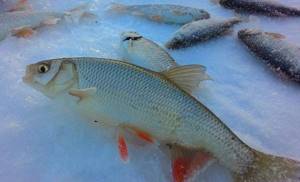
For fishing, they choose shallow, quiet pools near the walls of aquatic plants, and sometimes fishing directly in the reeds or cattails themselves. In the dead of winter, the passivity of the bite reaches its apogee and luring out the ram becomes much more difficult. Feeding the holes for many days is required using live ingredients and strong attractants, and the fishing itself is carried out purely on a panicle of three small moths and using a gentle jig, with frequent pauses, or even laying bait on the bottom, waiting for bites on the so-called winter road parking.
The period of last ice radically changes the behavior of the roach, leading it to a stable and aggressive bite. During this period, you can safely practice catching rams with a reelless bait and use coarser gear. Roach, goats and devils are often caught on the bait, which actively animate at the bottom with frequent tapping and raising of turbidity. Bait becomes almost unnecessary. The bite continues throughout the day, and sunny days with intense melting of the ice cover become especially successful, which must be taken into account when controlling your fishing passion with an elementary sense of self-preservation.
Taran: description, fishing, habitats, reproduction, enemies, food, photos, videos
https://youtu.be/wQENNCWthRshttps://youtu.be/NbTBPeYqS7s
_
Behavior
Both ram and roach lead a gregarious lifestyle. Single specimens are extremely rare. But the seasonality and habitat (salt or fresh water) of these species are significantly different.
Active feeding of rams lasts from April to October and occurs mainly in the coastal marine zone. The main food of fish is mollusks and small crustaceans. In rare cases (usually when food runs out), it can also feed on vegetation.
Important! Unlike roaches, which primarily feed on zooplankton, rams consume larger foods. For this purpose it has stronger jaws and sharper teeth.
However, plant nutrition is typical for the western population of the ram (Dnieper, Danube, etc.), where it has relatively many competitors among predators. The eastern populations living in the Taganrog Bay or the Mius Estuary practically do not have such a problem, since they always have enough mollusks and small crustaceans at their disposal.
During the warm season, fish stay mainly in the area of river mouths. It goes upstream to spawn, but never goes further than 10-20 km.
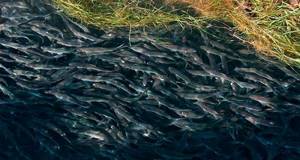
After a long period of fat gain, around the beginning of November, schools of fish begin to leave the sea and rise up the rivers.
Moreover, this movement does not look too fast. Large schools of fish move slowly, gaining weight along the way.
The movement does not stop even in winter. And under the ice, the ram is slowly but surely approaching the spawning grounds. After the spawning ends, the fish very quickly, literally in a few days, returns to the mouths of the rivers, from where they then move to the sea.
Vobla, on the contrary, winters in the sea, entering rivers only during spawning. Just like the ram, it rises relatively low, but does it much faster. Having spawned, the fish very quickly rolls back into the open sea, where it begins to actively feed, gaining weight.
In late autumn, feeding stops, and large schools of roach come closer to the mouth, where they spend time until the end of winter. As soon as spring begins, the fish sets off on another journey upstream.
Diet
The ram is quite picky in its choice of food and can consume both animal and plant food items. While at sea, she prefers to eat mollusks and crustaceans, which explains the high fat content and tenderness of her meat. During the migration period, potential prey includes:
- bloodworm;
- Daphnia;
- amphipods;
- seaweed;
- aerial and aquatic insects;
- various types of worms;
- caviar of other representatives of the ichthyofauna.
In spring and summer, when there is intensive growth of grass in the reservoir, the amount of plant food can reach up to 70% of the total diet. Taranka especially loves filament grass, which abundantly covers the surface of river stones in the warm season.
This representative of the carp family switches quite easily from one type of food to another. For example, if the ram is located in the Taganrog Bay, then the basis of its diet consists of various bivalves. When entering the Miussky Estuary, it quickly switches to feeding on small crustaceans, bottom invertebrates and grass.
On a note! In winter, the life processes of the ram slow down, but it does not stop feeding, but only reduces the amount of food it eats. The main part of its diet at this time consists of bloodworms and small aquatic insects.
Reproduction
Reproduction of the species under consideration occurs according to approximately the same pattern. Sexual maturity in rams and roaches occurs at 3-4 years of age in females and 2-3 years in males.
Spawning begins as soon as the water temperature rises to +8°C. If the fish has not yet reached the place, it accelerates and travels the rest of the way in a very short time.
A peculiarity of roach and ram is the simultaneous onset of spawning time for the entire flock. Spawning and fertilization are widespread and definitely attract attention.
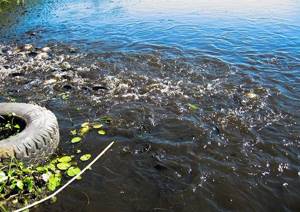
At the spawning site there is a lot of noise and splashing.
Sound can travel up to several hundred meters. The duration of spawning is quite short - only a few days.
Important! Spawning of roach and ram is carried out in still water. This could be a small and relatively calm section of a river, a creek, a lake located in the area of its bed, etc.
The eggs are located on the remains of last year's algae or grass. When the larvae appear, they will not only hide in this “litter”, but will also be able to feed on it.
Sexually mature individuals reach maximum fertility (up to 200 thousand eggs) approximately in the 5th year of life. In total, representatives of the species under consideration live about 10 years, that is, both roach and ram spawn 5-6 times during their lives.
Having finished spawning, adult fish, without getting sick after spawning, immediately leave its place. After about 2.5-3 weeks, larvae emerge from the eggs. Moreover, from the first days of life they begin to eat animal food - protozoa, including zooplankton. In rare cases, when there is no sufficient amount of food, they switch to feeding on last year’s and newly emerged vegetation.
After 4-5 months from the moment of spawning, the fry leave the place of birth and follow their parents.
Enemies of fish ram
In nature, there are many who want to feast on ram meat and its caviar. Predatory fish can easily do this at the time of spawning, when individuals enter rivers and are carried away by the reproduction process. At the same time, land predators who are not afraid to enter the river can also catch fish. Caviar becomes prey for river frogs, crayfish, and other fish species. Even the ram itself does not hesitate to eat its young. Since eggs are mainly spawned in shallow water, in conditions of extreme heat and scorching sun, they can be destroyed by its rays. The fast current during the rainy season also threatens the fry and eggs with destruction, carrying them upstream in a stormy stream.
Taran is very susceptible to the influence of parasites, so she often gets sick. It often harbors worms, such as helminths, quickly spreading inside the fish's body. Sick fish should not be eaten as there is a risk of serious poisoning. The cause of fish illness can also be pollution of the waters in which it lives.
And of course, humans cause great harm to the population. Fishermen caught large numbers of rams for food. When a serious threat to the species' numbers arose, the governments of Ukraine and Russia took control of the capture. This helped restore the number of individuals and keep it within acceptable limits.
Species status and commercial value of ram
Constant seasonal movements from place to place have caused the rams to gather in large flocks. This makes it easier and safer to swim to different places. In general, this type of roach does not stand out in any way; it leads a quiet life. The food supply varies depending on the time of year and the location of the flock at a certain moment.
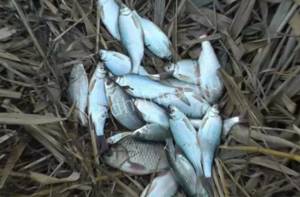
No one is engaged in special breeding of this population. There is no point in spending a lot of money and effort on creating water pastures if this fish can already be caught in abundance by any fisherman. Vessels go out fishing and return with a rich catch, and even single fishermen can boast of an impressive result. The main thing is to choose the place well. To limit the large-scale harvest of individuals and maintain numbers at a satisfactory level, Russia and Ukraine have introduced restrictions. This way you can only catch representatives that have reached or exceeded a body length of 14 centimeters. It is also strictly prohibited to fish during spawning.
Taste and dishes from ram
It is unlikely that you will be able to create a culinary masterpiece from ram, but there are several wonderful, and most importantly simple, recipes that will allow you to enjoy the taste of this fish in different variations. The meat is full of useful components and vitamins, and its protein is easily absorbed by the human body. There are enough healthy fats, a little less carbohydrates. Rich in vitamins, phosphorus, nickel, chromium, sulfur, zinc.
The easiest and fastest way is frying. Small fish that are easier to clean are better suited for this. It is necessary to cut off the heads, fins and remove the entrails. Then the fish is washed well in cold water. Now spices come into play and first of all it is salt and allspice. You can add your favorite spices to taste. Having seasoned the carcass well, roll it in flour and place it in a heated frying pan with oil. Fry until a crust appears; no need to keep it for long. You can eat it as an independent dish, or you can serve it with a side dish.
The second option will take longer, but this dish is already more complex and interesting. A large fish is taken, cleaned, the fins are trimmed, and the entrails are removed. The head is left for a beautiful look. The carcass is washed with water and set aside. Now the filling is prepared from onions, carrots and walnuts. All ingredients are chopped into small pieces. It is better to rinse the onion with water and squeeze it out, or pre-marinate it so that the bitterness goes away. All components are mixed with salt and fish seasoning, the mass is seasoned with olive oil. When the filling is ready, it is placed in the carcass; I secure the edges of the belly with toothpicks so that the pulp does not crawl out. The ram is placed in a baking sleeve, which in turn is placed in an oven or oven heated to 150°. This way the fish is cooked for only 15 - 20 minutes, after which the hot dish can be served.
The third method is the longest. Dried ram goes great with beer. But in order to wither it correctly, you need to follow the correct sequence of actions. Small fish cannot be gutted; it is better to remove the entrails from large ones. Take a large enamel bowl, the bottom of which is filled with table salt. The fish is placed on the salt, and a layer of salt is again poured on top. The dish is closed with a lid, but there should be a gap, so it is better to take a lid one size smaller and press it down. Large specimens are salted for up to 14 days, smaller ones for up to 5 days. After this period, the fish is taken out and washed well with clean water. It is soaked for a couple of hours, then the water is drained. When hanging the ram to dry, it is important to protect it from insects and ensure the room is ventilated. When the fish is ready, the cook decides for himself, based on his preferences.
Catching
Taranka is one of the most popular species of commercial fish.
Fishing for roach and ram is not too different. Traditionally, the best time for fishing is spring during the pre-spawn run. Fishing during this period will be most productive. Important! There are two more time intervals when fish can be caught, although with less efficiency than during the pre-spawning run. This is the post-spawning period and the second half of autumn. At this time, both varieties can be found in the areas of river mouths.
Since roach and ram are schooling animals, the angler’s task will be to detect their schools. Then everything is relatively simple - with the right gear, bait and complementary food, fishing will be highly productive.
TACKLE
Both subspecies are caught using float or bottom tackle. Traditionally, the latter are more effective and, as a result, popular.
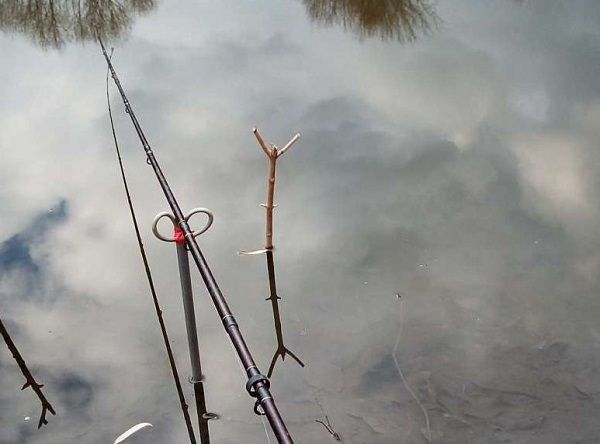
Considering the size of the fish, you can use a light feeder or even a picker, a regular donk or even a simple bait.
An approximate type of gear would be like this:
- Bottom or feeder rod with a length of 210 to 420 cm with a dough of 100-200 g.
- An inertia-free reel with a gear ratio of 4.2 to 1. Size - no less than 4000. In principle, you can even use an inertial reel.
- Monofilament line from 0.2 to 0.3 mm or braided line with a tensile load of up to 7 kg.
- Leashes made of monofilament 0.12 mm thick, 30-80 cm long.
In addition, you will need a feeder, sinker and hooks, the type of which corresponds to the size of the planned prey.
Important! To catch rams, use hooks No. 12-18 according to the international classification.
Loading is done with spaced pellets so that when casting the bait slowly sinks to the bottom, attracting fish.
If specialized tackle is not available, you can construct a simple hook. To do this, you will need about 100 m of fishing line with a thickness of 0.4 mm. At its end there is a sinker, which is necessary to hold the tackle at the bottom.
Several loops are made on the main line for attaching leashes. The first one is knitted 15 cm from the sinker, the rest at a distance of 20-40 cm from one another. A fishing line with a thickness of 0.25 mm is used as leashes, their length is up to 30 cm. A hook of the appropriate size is attached to each leash.
In narrow channels, branches, shallow water areas, as well as where long casts are necessary, roach and ram are caught using float rods. For this purpose, telescopic fishing rods with rods up to 5-6 m in length are used. For fishing, use a monofilament line 0.3 mm thick with a load of 3-4 kg.
In places with moderate currents and depths of up to 3 m, you can use match fishing rods with spinning reels.
Bait and groundbait
Roach and ram can be caught using bait of animal and plant origin. The most effective baits will be:
- worm;
- bloodworm;
- maggot;
- caddisfly or burdock larvae;
- insects.
In the cold season, the best fish go for bloodworms or worms. In summer and early autumn it is recommended to use vegetable baits:
- dough;
- parboiled wheat;
- boiled or canned corn.
You can also use bread crumbs or canned green peas.
In the summer, it is recommended to attract fish to the fishing zone and keep it there for some time. For this purpose, various bait mixtures are used. You can use store-bought ones, or you can make it yourself.
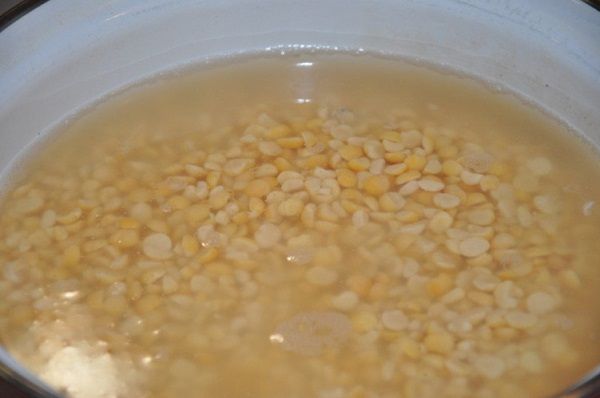
To do this, soak about 500 g of peas in 1.5 liters of water for 8-10 hours.
Next, the peas are brought to a boil and simmered over low heat for about an hour. The cooked mixture is crushed using a blender and a spoonful of sunflower oil is added to it. Next, you should cool the mixture in an open container so that excess moisture evaporates.
When fishing, a certain amount of soil taken from the bottom of the reservoir is poured into the mixture, and balls with a diameter of 5-10 cm are made from it. First, about 10 pieces are thrown into the fishing point. Every 20-30 minutes add one more.
Important! During the pre-spawning run, the use of complementary foods is not justified, since the fish are constantly on the move.
The name “ram” has become a common noun for two varieties of dried fish: ram and roach. They are very similar to roaches, but have some differences. In particular, the roach reaches a length of up to 30 cm and has silvery eyes. The ram has a higher back and slightly greater length and mass, and has golden eyes. Both species are quite active predators, feeding on small mollusks and crustaceans; the proportion of plant components in their diet is relatively small. Fish lead a schooling lifestyle. The main method of consumption is in dried form. In this case, the fish should be well salted to remove parasites.
What are the benefits of dried fish?
It is necessary to talk about the benefits of dried fish, referring to the composition of this product.
- It should be noted that this product is a rich source of calcium. Particularly useful are small fish, which have to be eaten together with the bones.
- Dried fish boasts a sufficient content of fluorine and phosphorus, which is certainly valuable for the body.
- There is an opinion about using the dried delicacy as an auxiliary component used to fight cancer. According to the results of studies conducted by Norwegian scientists, it turned out that polyunsaturated fatty acids (omega-3) can have a destructive effect on cancer cells.
- Dried fish can prevent symptoms of depression in pregnant women. The main role in this belongs to the same omega-3 fatty acids. Most of this component is found in salmon, mackerel, and herring.
- French scientists concluded that this valuable product can be used as a preventive component to combat senile dementia.
- Thanks to omega-3 fats, fatty deposits do not accumulate in blood vessels, which means that many cardiovascular diseases can be avoided.
- Dried fish is a remedy that fights the appearance of wrinkles. This is due to the presence of omega-3 fats, which compensate for the lack of protein in the body. And the aging process occurs faster when the body lacks this particular element.
- If a pregnant woman consumed the required amount of a delicacy rich in fatty acids, prepared by drying, during the period of bearing the baby, then her child will sleep better in the first time after birth. This is explained by the fact that omega-3 fats are actively involved in the development of the baby’s brain.
Thus, there is no doubt about the beneficial properties of dried fish; scientists from all over the world are trying to convince us of this through research.

